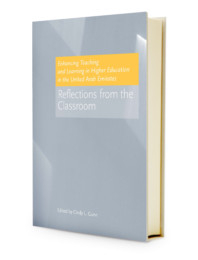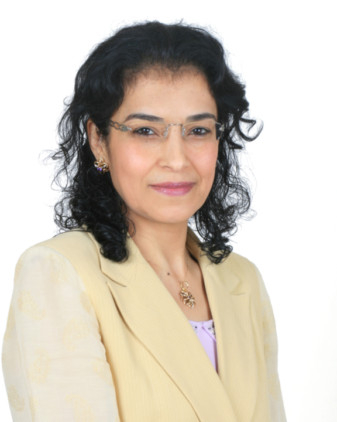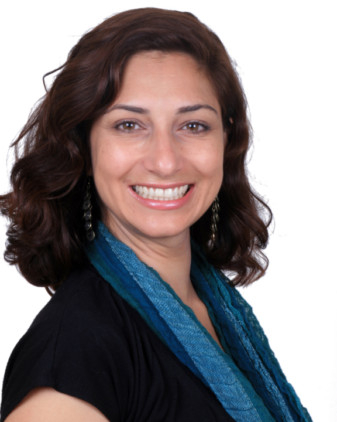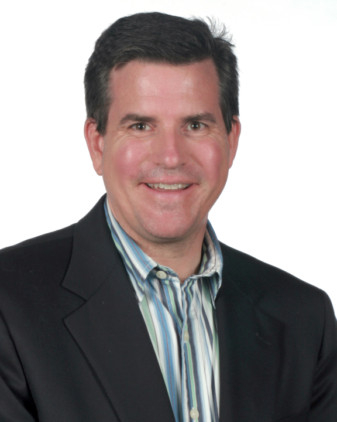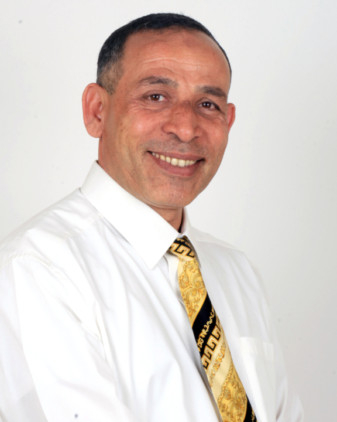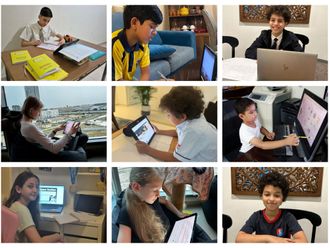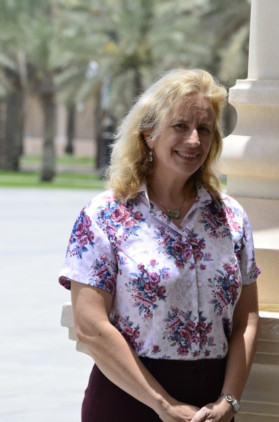
That students are as much the stakeholders in education as are teachers and educational institutions is a truth that needs no reinvention. Countless strategies have been devised decade after decade to impel the teacher and the taught to bring about a fusion of true learning and knowledge materialisation. Every scholarly mind contributes to this unending process with methods and means that enrich the field of pedagogy. In this context, the Scholarship of Teaching and Learning (SoTL), a concept of teaching popular since the 80s, has been gathering steam as it juxtaposes traditional teaching methods with modern ones for post-secondary students. It has a double-edged benefit - the methods it involves are aimed at sharpening the pedagogical expertise of the teachers while also making the students more active learners.
Cindy L Gunn, an English professor and the Director of the Faculty Development Centre the American University of Sharjah (AUS) has compiled a treatise entitled ‘Enhancing Teaching and Learning in Higher Education in the United Arab Emirates - Reflections from the Classroom’. A collection of 15 essays on teaching and learning issues written by professors from four colleges of the AUS, the book will be released this month presenting essays based on practical and experimental projects of the AUS professors who have worked hard on engaging with the students for better learning experience.
Gunn spoke to Education about the raison d’etre of the book and the issues involved with SoTL.
Q: What was the driving force behind this collaborative effort and your decision to edit it?
The idea for this book stemmed from my work with the faculty and teaching staff in my capacity as the Director of the Faculty Development Center at AUS. In the 2011-2012 academic year, the Faculty Development Center introduced a Faculty Teaching Certificate Program which I developed and taught. One of the requirements of the Teaching Certificate is a Capstone project in which faculty members demonstrate their efforts to enhance the learning opportunities in their classes by applying one or more of the ideas discussed in the program seminars. In addition, I also facilitated a SoTL learning community where the faculty involved were also working on exciting and innovative teaching projects. As with any scholarly work, it is imperative to share our findings, ideas and reflections with our peers so I approached a publisher with my idea for a book of these projects and they accepted my proposal.
Q: Do you think new age teaching and learning methodology can help the cause of education?
I certainly do. However, I think the term “new age” might be a misunderstood by some readers as the focus on improving teaching in higher education has been a priority for many years. The term “Scholarship of Teaching” was introduced by American educator Ernest Boyer in the 1980s. The term has been reworked to include learning so it is now known as the Scholarship of Teaching and Learning (SoTL). The following is an excerpt from my introduction to the book that encapsulates the essence of your question:
“As Dana’s well-known 1912 quote states, ‘Who dares to teach must never cease to learn’. The 15 chapters in this book are examples of university professors, instructors and academic teaching staff from different disciplines at the AUS who have taken up the challenge of both teaching to, and learning from, their students through reflective practice. They have deliberately chosen to approach teaching with inquiry and enthusiasm to enhance the learning opportunities for their students. Through topics ranging from introducing active learning techniques to examining the effect of technology on the learning process, each author describes and reflects upon his/her experience.
Q: If you were to condense all the 15 essays and distil the basic pointers to new age teaching methods, what would those be?
1) They are looking at ways to involve and engage their students in the learning process. In this sense, they are “new age”, since the new generation of learners are known to work collaboratively and do not respond well to the more traditional lecture style.
2) Some of the authors also describe their attempts to engage the students through the use of technology, another expectation of today’s learners.
3) Research also shows that active learning techniques discussed in the book:
a) involving the students through the use of clickers or other personal response software (FLOW, for example),
b) putting students in discussion groups – either face-to-face or online,
c) asking students to reflect on their learning,
d) teaching students to take control of their learning by asking students for feedback on a regular basis.
All these methods help the learning process.
Q: The main thrust of the professors’ inputs is on the importance of interdisciplinary approach, a collaborative teaching method involving students. Are these learning and teaching methods universal?
Yes, they can and I think another excerpt from the book answers this question:
“Although there are limited studies specifically devoted to teaching in the various disciplines in higher education, there is agreement among researchers that the concepts of teaching and learning often vary across disciplines (González, 2011, Healey, 2005, Lindblom-Ylännea, et.al, 2006, Neumann, 2001, Smeby, 1996) Åkerlind (2008) notes that, “over the last decade, there has been an increasing number of researchers suggesting that the most effective way of approaching teaching development for academics is to focus on developing their conceptual understanding of the nature of teaching and learning, as opposed to the more traditional focus on developing their teaching methods and skills” (p. 633). One way for professors or instructors to better understand the nature of teaching and learning in their classes is through reflective practice.
Q: How does one measure if these modern teaching methods translate into better annual results and also encourage the independent thinker in each student?
This is a very difficult, but important, question. There are so many variables that come into play when one tries to measure student success. Grades alone are certainly not enough (and in fact can misrepresent the learning that has taken place for some students). There is also the issue of delayed relevance of what students have been taught (this is discussed in one of the chapters in the book). Students may not realise how important something that they have been taught in class is until much later in their lives. Follow-up surveys to Alumni (and employers) can help gauge the impact and in fact most universities are required for accreditation purposes to regularly survey alumni so that is one way to measure. Just like the saying “you can lead a horse to water but you can’t make him drink”, with regards to teaching, “you can teach a class but you can’t make a student learn”.
However, I believe that if you try to make the class a better learning environment by reflecting on your classroom practice and making deliberate attempts to meet your students’ needs, as the authors of the chapters in the book have done, you will improve your students’ chances of success.
Active learning techniques also encourage independent and critical thinking in the students. This can be measured by alternative assessment methods (essays, interviews, presentations, etc.).
Q: How do you think a book like this will serve the teaching community?
When it comes to discussing teaching in higher education as Neumann notes, ‘its complexity is rarely acknowledged and aspects of university teaching are still under-examined’ (Neumann, 2001, p. 135). I hope this book will raise awareness of the Scholarship of Teaching and Learning in Higher Education and hopefully encourage others to engage in reflective practice and to introduce active learning in their classes.
Q: Do these techniques also have a regional colour as we are talking about students who come from different backgrounds and cultural values. How does one overcome these barriers?
This is a very good question and a good topic for another article! Being responsive to students’ needs also means we need to be culturally sensitive. By continually asking for feedback from students and involving them in the classroom decision making process (both tenets of Reflective Practice) we may avoid misunderstanding and enhance learning.
Q: How does one go about translating these erudite observations into practical steps towards enhancing better learning?
One of the key points has to do with the reflective approach taken by the Professors to improve their classroom practice. By reflecting on what happens in the classroom, the students’ needs are more likely to be met and, with luck, more learning will be achieved.
Q How many of these teaching princioples are implemented in the everyday classroom?
All of them but perhaps not on a daily basis.
Q: Is there a need for a higher body that examines and make sure these best practices are actually implemented in everyday teaching?
It is my understanding that most universities have some mechanism in place to ensure that best practices are being implemented. I do not think there needs to be a higher body or government regulation.



